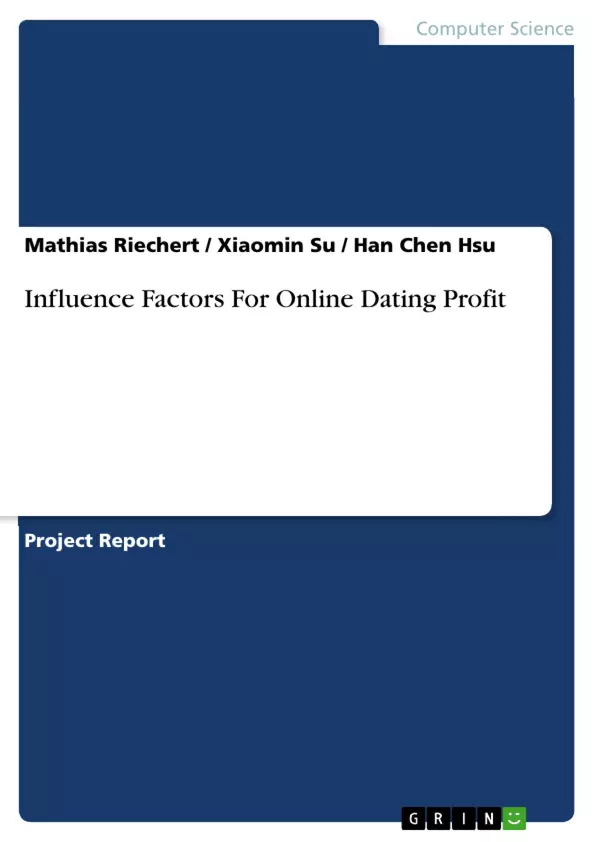‘. . . Knowledge Discovery is the most desirable end-product of computing. Finding new phenomena or enhancing our knowledge about them has a greater long-range value than optimizing production processes or inventories, and is second only to task that preserve our world and our environment. It is not surprising that it is also one of the most difficult computing challenges to do well . . .’ (Wiederhold, 1996).
The main objective of knowledge discovery in Data Mining lies in the finding of data patterns. The knowledge about the current customers can be used to predict profitable customers based on their personal information. This explorative report focuses on analysing different methods of data mining to predict profitable customers of a dating site. The second key aspect is to match individual customers based on their personal information.
The dataset analysed is derived from the customer database of Australia’s largest dating site with over 1.9 million members. The dataset contains static activity and dynamic activity. Static activity includes all personal, demographic and interest information entered by the customer at its registration. The emails sent, channels communicated and kisses sent describe the dynamic activity.
Inhaltsverzeichnis (Table of Contents)
- INTRODUCTION
- RELATED WORK
- CONCEPTUALIZATION OF PROCESSES OF DISCOVERY
- PRE-PROCESSING AND POST-PROCESSING
- How do users interact?
- Which users are likely to pay based on dynamic data?
- Which users are likely to pay based on static data?
- Combine the findings
- COMPARISON TO TRADITIONAL TOOLS
- CONCLUSION
- REFERENCES
- APPENDIX - PROC SQL
Zielsetzung und Themenschwerpunkte (Objectives and Key Themes)
The primary objective of this data mining project is to analyze customer data from a dating website to predict profitable customers based on their personal information and user behavior. The goal is to identify patterns within the data that can be used to understand how users interact with the platform, who is likely to pay for services, and what factors influence purchase decisions.
- Understanding user interaction patterns on a dating website.
- Predicting customer profitability based on dynamic and static data.
- Identifying factors that influence users to purchase premium services.
- Exploring the use of data mining techniques for customer segmentation and targeting.
- Developing a data-driven strategy for the future development of the dating website.
Zusammenfassung der Kapitel (Chapter Summaries)
The report begins with an introduction highlighting the importance of knowledge discovery in data mining and outlining the objectives of this project. It then discusses relevant research and literature in the field of online dating data mining.
Chapter 3 focuses on the conceptualization of processes of discovery, detailing the steps involved in analyzing the data. This includes pre-processing and post-processing techniques for preparing the data for analysis.
Chapter 4 delves into the core of the project, exploring how users interact on the dating website. It analyzes user behavior data to understand patterns of interaction and communication.
Chapter 5 investigates the question of customer profitability, considering both static and dynamic data. The analysis aims to identify characteristics and behaviors associated with users who are likely to pay for premium services.
Schlüsselwörter (Keywords)
The key focus areas of this project include data mining, customer segmentation, online dating, user behavior analysis, profitability prediction, static and dynamic data, data visualization, and decision trees. The research utilizes various data mining techniques, including regression analysis, nearest neighbor clustering, and decision tree algorithms, to explore the complex relationships within the dating website data.
- Arbeit zitieren
- B. Sc. Mathias Riechert (Autor:in), Xiaomin Su (Autor:in), Han Chen Hsu (Autor:in), 2010, Influence Factors For Online Dating Profit, München, GRIN Verlag, https://www.grin.com/document/171760



